From heat waves to hard frosts, October has it all depending on where you live. This is a transitional month when we’re still getting plants in the ground (or in the case of warmer zones FINALLY having cool enough days to plant!) but also beginning to prep for whatever winter throws our way. Grab a rake, trowel, and something pumpkin spice and enjoy the beautiful days, crisp air, and options for fall decorating with natural materials. (Love this colorful wreath? Here’s how to make your own.)
Here’s how to make the most of the month.
ZONE: 3 - 5
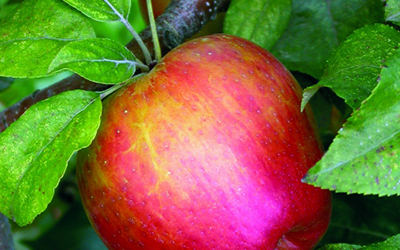
Fruits of Your Labors: There’s still time to get to fruit producing plants–fruit trees, raspberries, blueberries and grapes–into the ground. Most trees, shrubs, and perennials can establish their roots in soil temperatures down to 45 degrees F. (7 C.). Sooner, of course, is better than later this time of year.
(<—– This is Honeycrisp™ Apple (yum!)
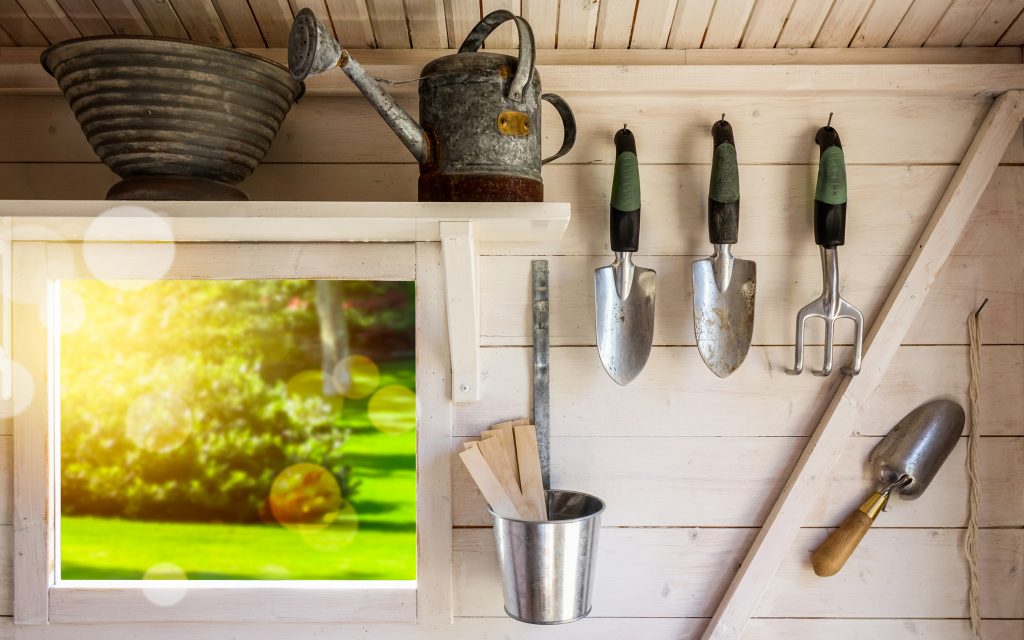
KonMari the Shed: No one wants to face crusty, rusty, dull tools in March! Head for the shed to clean, sharpen, and oil all garden tools before storing for winter. Garden centers can help you with the right materials for the job. (I lightly sand the wooden handles of garden tools because they seem to swell and splinter in winter.)
(<—–#gardenshedgoals)
ZONE: 6 - 8
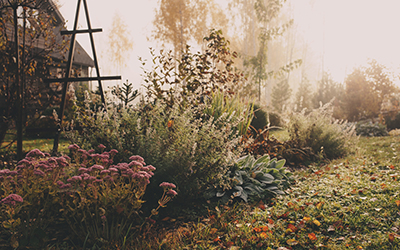
Frost Warning: Zones 6 - 8 typically get hit with a hard frost anywhere from late October to the end of November. (Of course this could be earlier or later.) Therefore, the window for planting, particularly perennials, is beginning to close. Get to a garden center because plants installed in fall will be rooted in and ready to rock come spring. Find your garden center here.
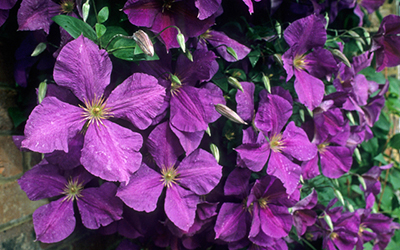
Be Supportive: In many zones winter may or may not bring snow, but for sure, there will be winds. It's an ideal time to trim back, tie up, or stake bushy or tall perennials such as clematis. These do not completely die back in order to prevent damage from gales and gusts.
(<—– This is Jackman Superba Clematis)
ZONE: 9 - 11
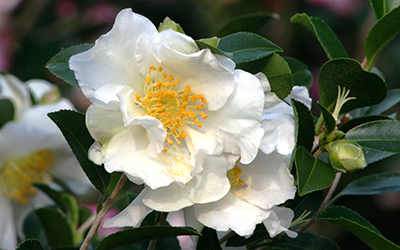
Quick Change Artists: Sasanqua camellias, that is. One day they’re just glossy green shrubs and the next, they’re smothered in blooms! These fall bloomers should be doing their thing about now. Your only job is to enjoy the show. Hold off on feeding until after they’ve finished this bloom cycle in early winter. (Note: You will not feed Japanese camellias until next spring after they finish flowering.) Ideas for using the blooms here.
(<—– This is Setsugekka Camellia)

Give It a Rest: Plants need downtime too. In warmer zones where sub-tropical plants like bougainvillea, lantana, bird of paradise, etc. just keep on keeping on nearly year round, it’s tempting to feed all the time. Shelve the fertilizer and do not feed frost sensitive or sub-tropical plants this time of year. You will be rewarded with bigger blooms early next year.
(<—– This is Miss Huff Hardy Lantana)
All Zones!
- Banish the Blahs: Continue to take stock of the garden. Landscape with an eye toward the hits and the misses. An blah bed might just need tweaking with a few new shrubs that add more height or volume. A beautiful summery border of roses or hydrangeas could be off-the-charts. With the addition of something that blooms earlier and something else that blooms later. You get the idea.
-
When in Doubt: Here are a few "I just don't love it" remedies that always work for me. Plant in odd numbers of 3, 5, 7. Mix spikes, spires, mopheads, plumes, and low-growing blooms. Study still-life paintings by Old Masters-no one mixes colors and textures better (other than nature, of course!)
-
If you do nothing else: No matter where you live, October is one of the most important months of the year. This is when you should apply a thick layer of mulch–2 inches is ideal. Winter's rains and/or snow help to break down mulch adding nutrients to the soil. Mulch adds a layer of insulation that can help plants survive dramatic spikes in weather. Do it THIS weekend!





Please login to comment.
Don't have an account?
Sign Up for free